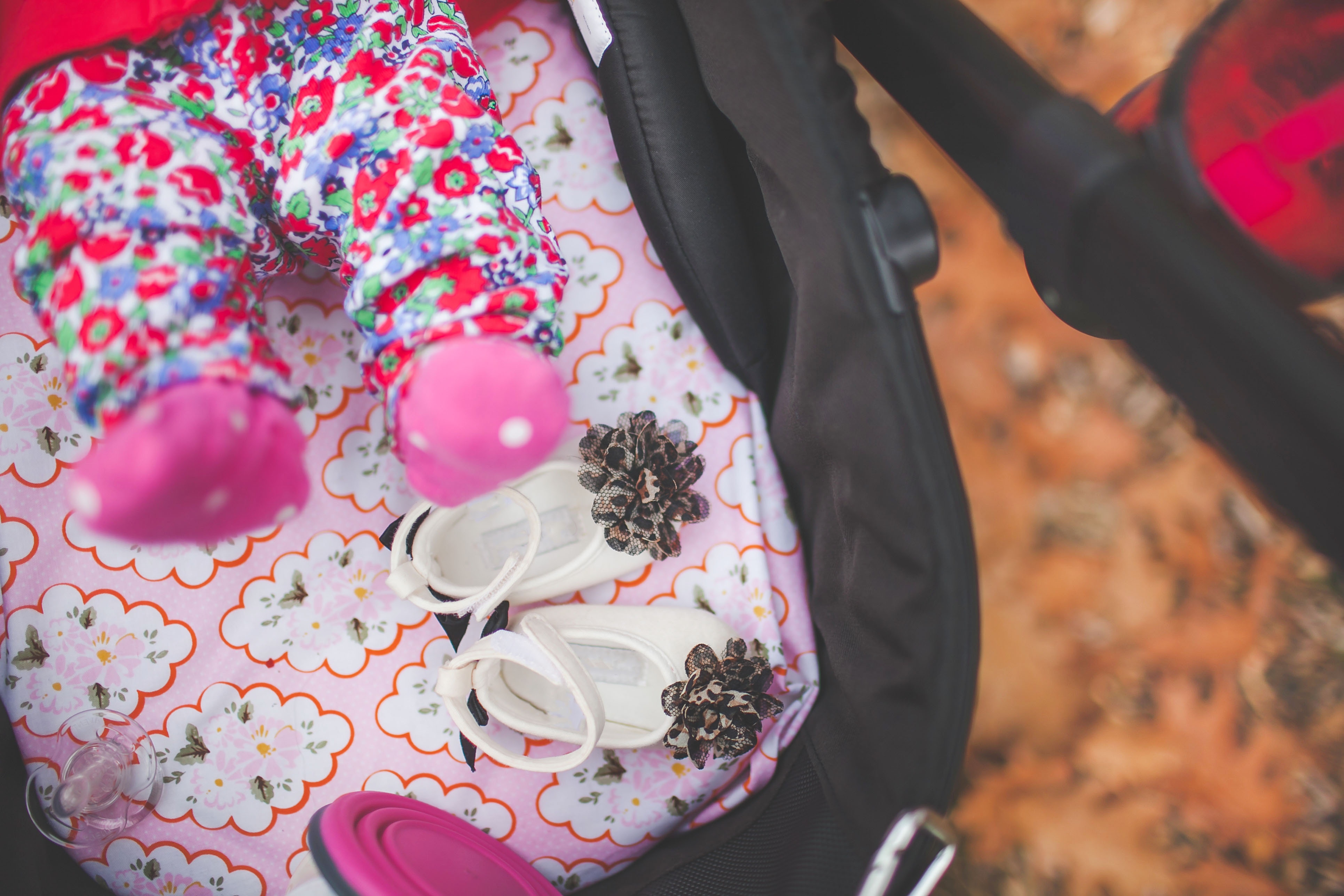Choosing a pram is one of those “iconic” moments of impending parenthood which swiftly dissolves into indecision, confusion, and often boredom. To people who have never used one before, the array of options is befuddling. The key (as with many purchases) is to consider your needs. So many families end up with an array of prams. Sometimes this is because they have varying needs, and sometimes it is because they don’t really know what they are looking for. Predicting your life “post baby” or even “post second baby” and so on is reasonably impossible. But try.
Our strong advice is to read over the following questions and considerations and talk with those around you about how you might use the pram. And who else might use the pram. And then go to a real-life store and review some. Really try them. Try wheeling them around the store. Does it feel comfortable? Does it feel too big, too little, too difficult to “pop up” onto a shelf (use instead of a kerb or that step outside your house etc)? Can you fold it? Can you lift it? Can you lift it when it is folded? Will it fit in your house/garage/car etc? After that trip you might find a great pram, or you might need to leave and recover and undertake some internet searching to narrow your field. Once armed with a shortlist, brave the gauntlet and again review them in real life if possible.
Some of the questions and considerations we found useful (particularly with retrospect…) were:
Will we mostly be walking from home or after a car trip? Or after public transport?
The key to this question is how heavy and cumbersome can you tolerate? Lifting a pram into and out of a car boot or onto and off public transport is not easy, but some are easier than others. This is not just based on weight, although weight is a serious factor. Additional features to check are how easily it folds, and how easily you can lift it into your boot. Once you also have a baby or toddler to contend with, being able to quickly collapse and construct a pram becomes vital, as well as chucking it into the boot while hoping against hope that the sleeping baby continues to sleep until you can get the car moving, or the screaming toddler settles before the whole family (yourself included) joins in. If you plan on (almost exclusively) walking from home, these are less vital considerations.
(Don’t focus too much on the immediate post-partum period. This is a very short amount of time relative to the rest of the time you will use a pram, and for those first few weeks not many parents venture out solo with the pram.)
Wheels. Which kind suits my likely routes best?
Pumped tires puncture. And need replacing every now and then. And may need a pump and a little bit of maintenance. But they handle bumps so much more smoothly than plastic tires. For the baby but also for you. Trying to maneouvre plastic tires over cobbles or uneven ground with the weight of a child in the pram can be a real struggle. So if you will be mostly using your pram in malls, shops, relatively well made and flat surfaces, plastic tires are probably your best bet. But if you plan to be “off road” and this includes using uneven pavements and the occasional gravel path, you need inflatable tires.
3 vs 4 wheels
In an instant, this will reduce the range you review dramatically. 3 wheelers are generally a lot more manoeuvrable, often have inflatable tires, and are often more of a “jogging” style of pram. 4 wheelers are less likely to topple over as they have a wider wheelbase. They are also less likely to roll away by themselves. While these features generally cause most parents to recoil in horror and leap toward 4 wheeled prams, all prams should have a wrist strap and a fixed brake mechanism, which means that so long as you use them, the pram will never roll away. To avoid the pram toppling over, simply being mindful of where you park it on a slope and holding the handle when walking along is usually enough to entirely avoid these being issues.
Age
Many prams or buggies are not suitable for a newborn. A newborn needs to be able to lie completely flat. So it is pointless to buy a 6 month + pram if you hope to use it for a newborn baby. Many of these prams come with adaptors to add a carrycot or infant carseat, rendering them useful again. Review the size and cost of these additions, they can often drivre the price higher than buying a newborn-ready pram, but can also be more newborn-suited than an otherwise more toddler-sized seat which happens to lie flat.
Handlebar height
If two people are likely to use the pram and are of different heights, make sure the handlebar suits both of you or is easily adjustable.
Harness
Not all harnesses are easy to fit. Make sure you are confident with the one you choose. Remember that your child will grow stronger and probably more wiggly as they grow. We particularly like 5 point harnesses where each piece attaches separately. There are no “first plug these two pieces together and then fasten them into the central piece while using your other hand to restrain your child” conundrums with which to contend. You just slot in each piece as able till the child is restrained! Ease of size adjustment is less of a big deal. Although your child will grow, the frequency of having to make major adjustments to the strap length is not too often, so even if there is some complexity here it is at least rare.
Parent-facing options
For some, this is a deal breaker. Many prams offer “rotating” seats so the child can be turned to face the parent. Most carrycots or similar newborn accessories are parent facing, but some offer the option to turn the child seat to face you as you walk. Some children and parents find this deeply reassuring, while other children prefer to be forward facing to look out and see the world as they approach it. Other parents find that the parent-facing option is harder to use to allow the child to sleep in the pram; facing away is less likely to keep them awake if you want them to have a nap while you walk. It is difficult to predict what you will want and even harder to predict what your child will want. Our suggestion is that this might not actually be a deal breaker. If all other features you need are there in the pram you choose, a lack of parent-facing option might not be a great reason to avoid a pram. You will quickly find ways to see and interact with your child regardless of the way they face.
Window to see your child
Most parents will want to repeatedly check that their child is still there, and whether they are awake or asleep. Having a window in the sun shade to do so is a huge help in avoiding waking the child. A special additional bonus is having a flap which holds by magnets rather than noisy velcro (which is another way to wake a sleeping child). Of course as above some prams offer a parent-facing option, but if the seat turns round at some point, ensure there is still a way for you to see your child as you walk.
Weatherproofing
Despite being sold in Australia, some prams offer very little sun protection. Make sure that yours has a reasonable degree of sun cover, it is much easier to use the integral cover than adding umbrellas or shades, as well as being safer. Using drapes and blankets to shade your child can inadvertently cause them damage from heat or build up of unwanted carbon monoxide. If you encounter frequent rain, again make sure there is some kind of protection from this, either integral or as an approved add-on.
Storage
There is a vast array of storage available. Most prams have some storage under the seat, but the capacity both in volume and in weight can really vary. Most will accommodate a simple bag with a few nappies, a change of baby clothes and some wipes, but some will also accommodate a wide variety of shopping or toys or whatever else you might like to carry. If you know you will be using your pram to go shopping, make sure it can carry what you might buy.
After reviewing all of the above talking points, we can’t emphasise enough the importance of a test drive. Even just around a shop, with no baby or wriggling toddler in the pram. Try it. And then get it. There is no perfect pram. Most of them have great features and not-so-great features. Finding a balance that suits you is enough. That fiddly little button will drive some people mad and some people will cope with it. Find what works well enough that you’ll be able to get out and about with your little one. And then use it. Enjoy your outings!




1 thought on “How to choose a pram”
Comments are closed.